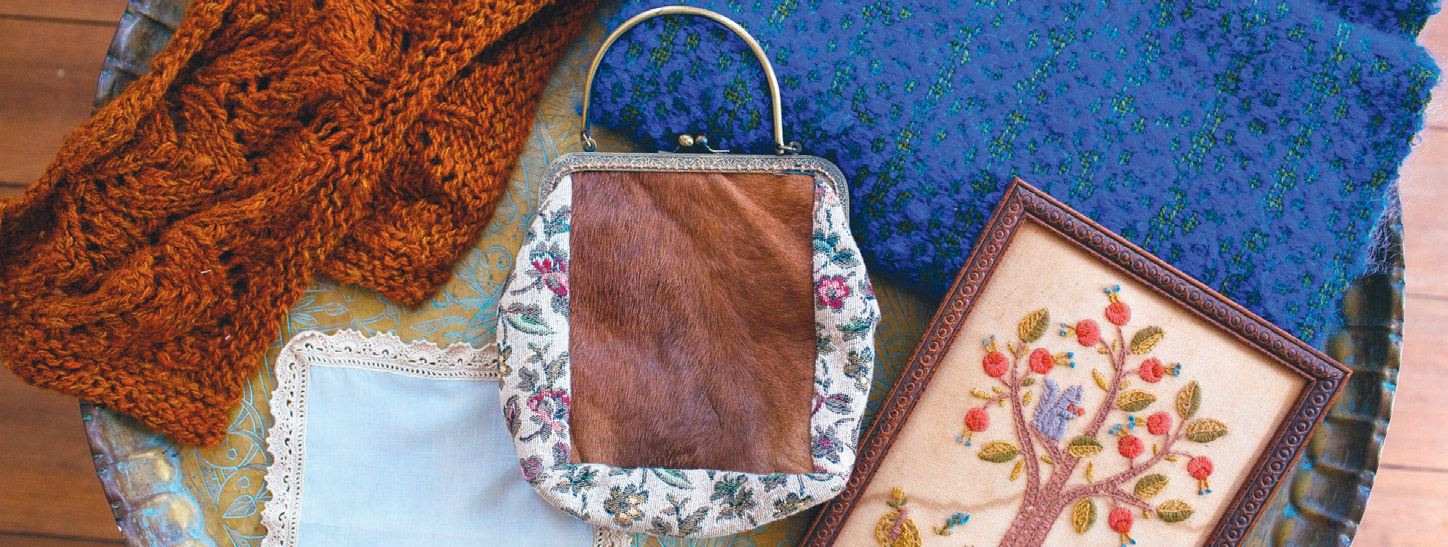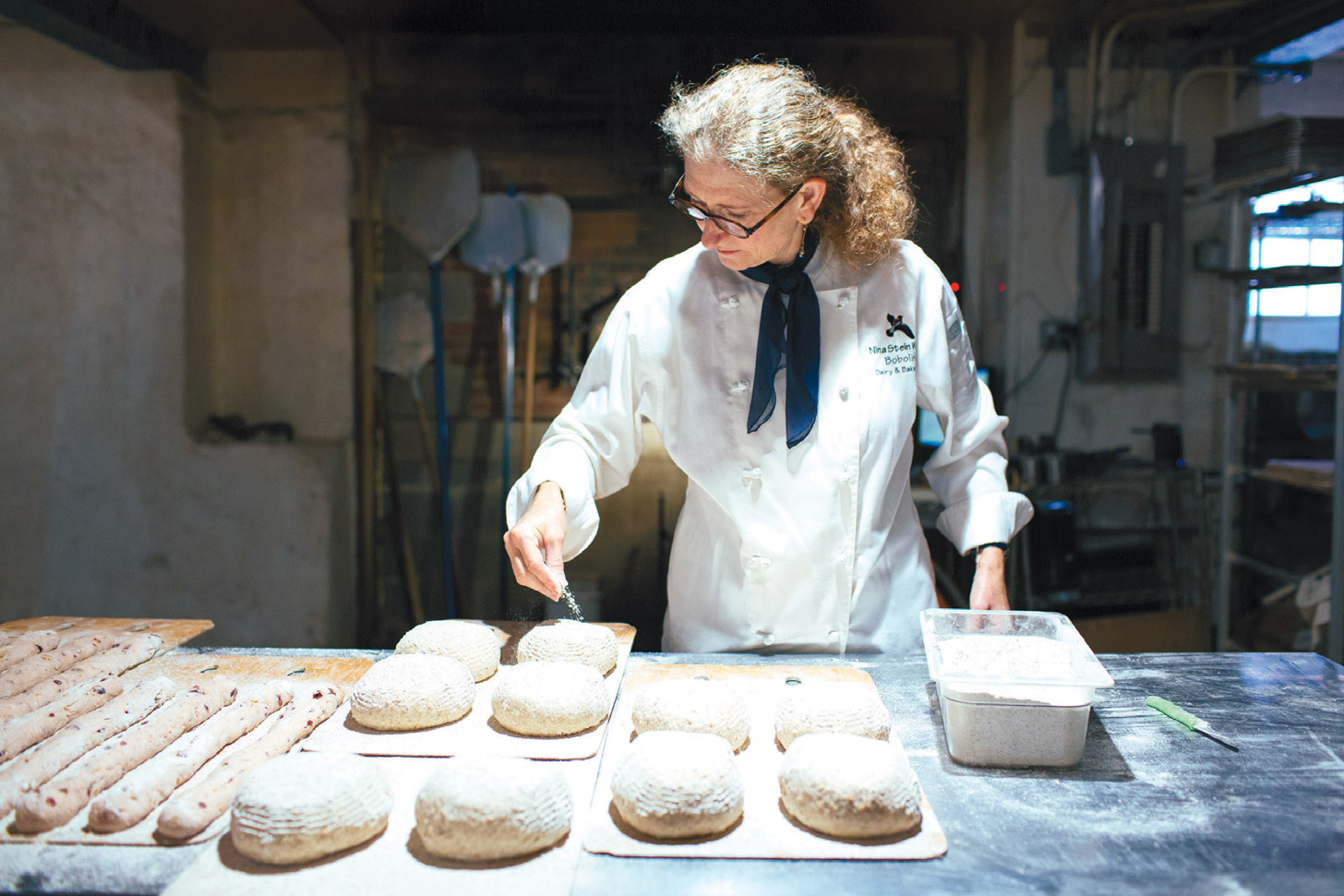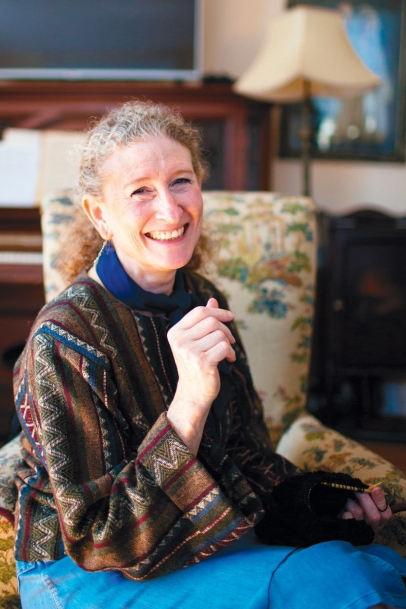One Hand Clapping
Wisdom after the fall
I have always used my hands. A lot. My mom used to proudly recount how I, at age three, found a needle and thread, and sewed her pajama legs together. At age four, I visited Colonial Williamsburg with my family, which sparked my love of all homesteading crafts—embroidery, sewing, knitting, cooking, gardening. To my young mind, homemade and old-fashioned was always better.
I learned to knit from my kindergarten teacher. By the time I was seven, I was making a good portion of my own clothes, using a sewing machine. My mom taught me, but was amazed at how quickly I learned. I added crocheting to my skill set, and made uninformed but earnest attempts at growing vegetables next to our split-level house. It would be years before I learned about topsoil …
My dad was an industrial arts teacher, and at eight I was taught how to carve wood with a chisel, wield a drill, sand and grout. My solo baking attempts were leaden, but my Girl Scout troop made sticky buns and butter, and I learned how dough should look and feel.
Although my professional aspiration was to become a ballet dancer, I spent all of my free time on crafts, to the consternation of my friends. Already, something in the act of creating was compelling to me. I was enamored of transforming raw materials into a finished product, greater than the sum of its parts.
I know that the concrete nature of my handcrafts has always been a good balance to the ephemeral nature of dance. I am fortunate to have a steel memory for choreography, and a few photographs of my performing days. Video was just becoming available as I “retired” to have a family, so precious little of my work is documented.
On the other hand, I still have the crewel embroideries that I completed at ages eight and 10. I still wear the shawls that I wove in 1972 and use the blanket that I wove the following year. I am stabilized by these old friends, with the memories of their making and the stages of my life caught in the weave.
But there’s more to it. There were times when I was upset, and hours of knitting something complicated helped me to process. Part distraction, part meditation, crafting has served as my emotional therapy, a constructive perseveration for difficult times.
This is the intrinsic subtext of my life, which is now fully given over to my crafts side, as I run an artisanal bakery that is part of the business of Bobolink Dairy & Bakehouse. So now my work day involves forming breads, and teaching others how to form breads. I work in the garden, cook meals for our staff, prune trees and vines, serve bread and cheese to customers. The work is so fulfilling, and I am fortunate to have such a satisfying life.
So when I caught my foot in a gopher hole and felt myself about to break my ankle, I gracefully took the force of the fall by rolling. This is, for sure, the safest way to handle a fall. Unfortunately, I apparently opened my hand to release the bucket I was holding, and tore my thumb ligament!
No big deal, sure. I will never stop being grateful that I was able to have my thumb repaired competently, even attractively, under anesthesia, in a sterile environment.
But the thing that the surgeon did not prepare me for was my utter helplessness during recovery.
At first, my husband, Jonathan, was delighted to get to take care of me, as he loves to smother me with attention. But it gets old fast. Again, I am grateful that it was only one hand injured, it was only temporary. However, try buttoning your pants with one hand—especially as they tighten by the day since you can’t carry, dig, load and unload an oven, or do any work that involves expending energy.

Mind you, it wasn’t just my thumb that got involved. My whole hand chimed in and swelled like a baseball mitt, for three months. Despite a variety of strategies, my hand protested any jostling caused by taking a walk, stretching or walking up and down our house staircase. Dancing was out of the question.
Jonathan was thrilled that I was sitting still for the first time in our 30-plus-year marriage. I wasn’t bored, really, since my days were full, thanks to the fact that it took me about an hour just to open the mail. Since my left hand was too sore to even hold an envelope still, I held the envelope against the table with my elbow, and cut it open with a scissor. I then held the corner of the envelope gingerly with my teeth, so I could pull the contents out with my right hand. Try it, it’s fun as a drinking game!
I tried to stay upbeat, grateful, positive. It was hard. Throughout my life, stressful times could be managed, thanks to my stress-relieving activities: cooking, dancing, knitting, sewing, playing the piano. I had none of these at my disposal, and I was GRUMPY.
Is this why folks in the developed world are so depressed? Were we more content in earlier days, when folks were engaged in craftsmanship as part of their work or home life? How can we value fast, cheap products, assembled by robots, or poorly paid workers overseas? Why can’t we bring back manufacturing jobs, fair farming jobs, fair food jobs?
How can we raise contented children if they don’t know how to sew on a button, make a sock puppet, play music or entertain themselves without electricity?
How can we be satisfied by our food if we haven’t crafted it, smelled it permeating our home as it cooked, broadcasting its journey to becoming dinner as we go about our other tasks?
I had a lot of time to ponder these questions as I endured my six months of occupational therapy and diligent exercise. My personal joy at being able to hold an onion still enough to safely slice it tells me that for many, these handcrafts are more important to our wellbeing than our popular culture realizes.

I tried to stay upbeat, grateful, positive. It was hard. Throughout my
life, stressful times could be managed, thanks to my stress-relieving
activities: cooking, dancing, knitting, sewing, playing the piano.
I had none of these at my disposal, and I was GRUMPY.
So, if you are as lucky as I was, and didn’t break your ankle in a gopher hole, here’s my advice:
Don’t do it in autumn. Picking grapes and cherry tomatoes with one hand is nearly impossible. They will fly everywhere but in the bucket that you strategically placed below them.
Get some friends to drop everything and help you do the canning so that you don’t have to watch your entire season’s work become a paradise for fruit flies. You may have other friends who inform you that grape jam and canned tomatoes are available in the supermarket. They can still be your friends, but there are things about you that they may never understand.
Insist that your surgeon send you to occupational therapy as soon as possible, before your repaired hand is healed. The occupational therapists are the ones who can help you figure out adaptive devices to help you do what needs to get done, as independently as possible. Your surgeon knows that you are fixed, and that’s enough for him. The occupational therapists are the real rock stars of your healing. They are the ones who know that using your hands is what makes you YOU!
I am back to normal after a year. Not really normal, but the new normal. Every time I zip my clothes, cut a slice of bread, lift a cooler or pull a weed, I thank the spirits that I have healed. I thank my family, friends and staff for putting up with me. And I carefully watch where I’m walking.
Nina White and her husband Jonathan are the owners of Bobolink Dairy and Bake House in Milford. cowsoutside.com.




